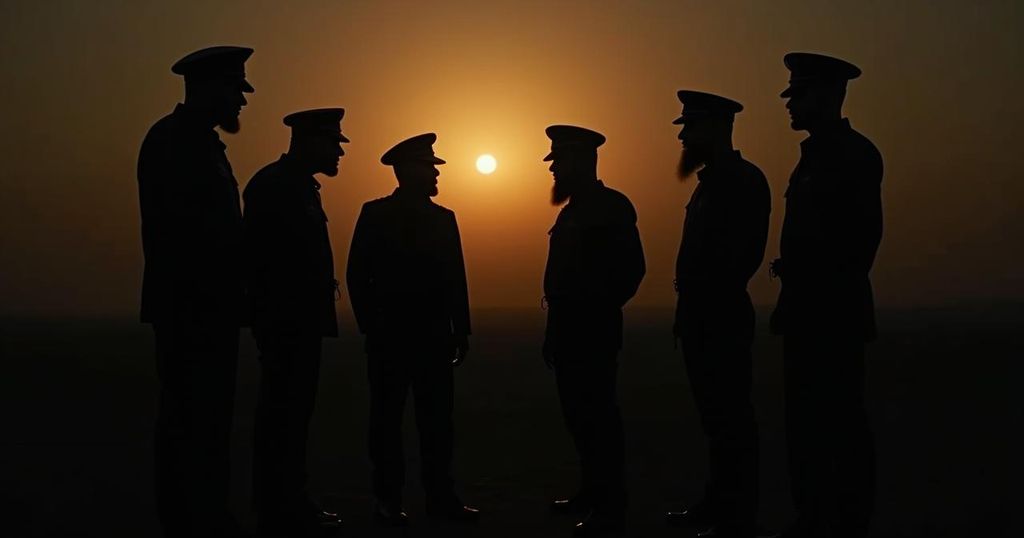In a surge of Israeli military activity, seven high-ranking Hezbollah leaders were killed in airstrikes, including the influential Hassan Nasrallah. This escalation represents a notable shift in the Israeli-Hezbollah conflict, as the group grapples with the loss of crucial command figures central to its operations in the Middle East and the ongoing war dynamics.
In the past week, Israeli military operations have led to the deaths of seven senior officials from Hezbollah, including the prominent leader Hassan Nasrallah, marking a significant escalation in the ongoing conflict between Israel and Hezbollah. The recent airstrikes in Lebanon have left the nation in shock and have been hailed by Israeli officials as a major military success. This series of events began after Hezbollah opened a front in support of Hamas following the latter’s unexpected attack in southern Israel. The implications of these strikes represent a crucial shift in the regional power dynamics, particularly as Hezbollah struggles to recover from the loss of key figures integral to its command structure since its inception in the early 1980s. Among the fatalities, Hassan Nasrallah, who had been leading the group since 1992 and was instrumental in Hezbollah’s growth as a significant military and political entity in Lebanon, stood out. His tenure included navigating multiple conflicts with Israel and shaping Hezbollah’s role in regional geopolitics, especially in Syria and Iraq. Furthermore, significant casualties included Nabil Kaouk, Ibrahim Akil, Ahmad Wehbe, Ali Karaki, Mohammad Surour, and Ibrahim Kobeissi, all of whom held critical roles within Hezbollah’s military hierarchy and contributed to the group’s strategic operations against Israel. These losses have notably weakened Hezbollah’s military capabilities, prompting concerns about the group’s future operations and the stability of Lebanon amid escalating hostilities. Currently, the organization’s second-in-command, Naim Kassem, remains one of the highest-ranking officials, and other potential successions within the leadership remain vital as Hezbollah attempts to navigate this unprecedented crisis. The question now lies in how Hezbollah will respond to the loss of its leadership and what this means for the ongoing conflict in the region.
The recent developments involving Hezbollah emanate from an overarching conflict between Israel and the militant organization, particularly highlighted by the surprise attack from Hamas. Hezbollah, aligning with Hamas, escalated its involvement in the conflict, leading to direct Israeli military action targeting its leadership. The assassination of high-ranking officials such as Hassan Nasrallah, who played a pivotal role in shaping Hezbollah’s strategies and practices, signals a profound alteration in both the organizational structure of Hezbollah and the regional power balance. Hezbollah’s history dates back to the early 1980s during the Lebanese civil war when it emerged as a dominant paramilitary force in response to Israeli occupation. Over the decades, Hezbollah has been deeply involved in various regional conflicts and has developed military capabilities that have challenged Israeli forces. The group’s strategies and operations have often put it in the crosshairs of Israeli military attention, exemplified by targeted strikes against its leaders, especially as the geopolitical landscape shifts.
The death of seven high-ranking Hezbollah officials, particularly that of Hassan Nasrallah, signals a critical juncture in the ongoing conflict between Israel and Hezbollah. This unprecedented military escalation underscores the volatility of the Middle East, suggesting that Hezbollah may face significant challenges in reorganizing and responding to the loss of its leadership. As the conflict continues, the operational capacity and future strategies of Hezbollah remain in question, with implications not only for Lebanon but for the wider region as well.
Original Source: www.nbcphiladelphia.com






